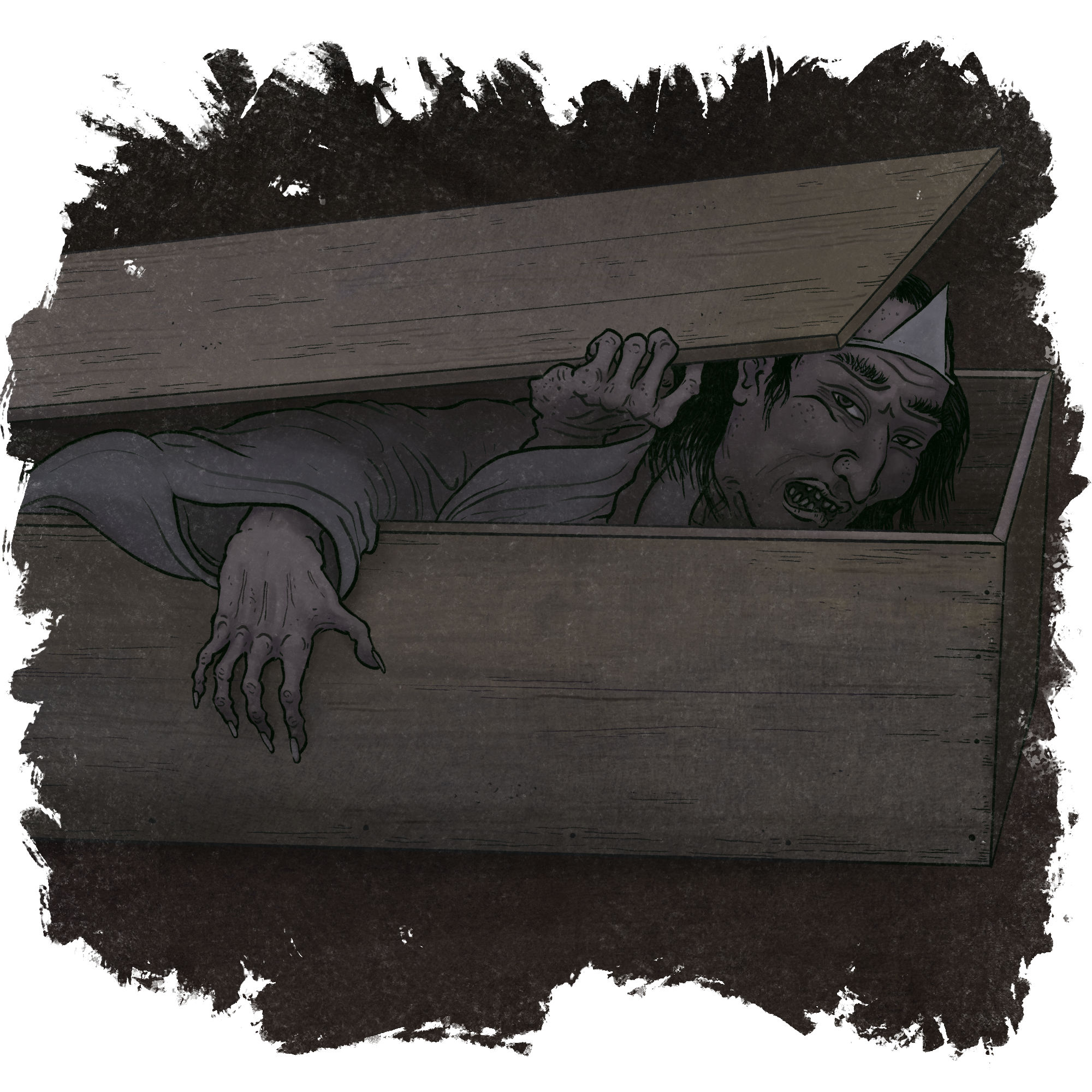Tonight’s yōkai is a tsuchigumo: an interesting term with a lot of history. Literally it means “earth spider,” and they are depicted in scroll paintings as gigantic monster spiders who can shape-change (often into women), and who are hunted down by heroic samurai. And by the Edo period, this was largely the public conception of tsuchigumo.
However, tsuchigumo was originally a derogatory term for certain tribes that resisted subjugation by the ancient country of Yamato. Those who did not willingly submit to the emperor were forcefully subjugated or exterminated. When the first histories of Japan were written down, the stories of these conquests were recorded as stories of heroic samurai traveling off into the wilderness to slay monsters. The “monsters” were actually populations of people made into demons via storytelling. Tsuchigumo is one famous example of this. Another is Akuru, and some scholars say that Yamata no orochi may be one too. I find these windows into history one of the most fascinating things about studying yōkai.
One more note: this story references a poem about “an ama from Shinobu no Ura.” This is a phrase that will probably not be familiar to most readers today. It is a reference to a line in Tsurezuregusa. To roughly sum up the idea behind this line and the reference, it talks about how a public relationship, such as a formally arranged and publicly-acknowledged marriage, is far less sweet than a relationship in which you sneak off to make love, even though others might be watching you.
Edo period views on sex were quite different than they are today, in the West and in Japan. Marriages were made for practical/political purposes, while sneaking around and having sex out of wedlock was the normal way to find love. In the story below, the woman loves the man, but she is still shy enough that she doesn’t want others to see her sleeping with him.
How a Tsuchigumo Turned into a Woman in Kaga
A certain man had the opportunity to become a public official, so he journeyed from Kyōto to Kaga Province and rented a room in a townhouse. The owner’s daughter was so beautiful that when the man saw her, he fell in love instantly, and he became heartsick for her. The man called for his servant, a samurai, and confessed his strong feelings for her to him.
The samurai took pity on the man and offered to act as an intermediary for him. He courted the girl, and she, being a compassionate woman, soon opened her heart to the man. Even though she was not, as the poets say, an “ama from Shinobu no Ura,” she was uncomfortable with the idea of being seen by others. So night after night, past dark, she snuck into the man’s room to sleep with him.
One night, she visited the man and he was as delighted as ever to see her again, but while they were exchanging deep vows of love, the samurai servant heard the woman’s voice coming from the kitchen. He wondered what was going on, and so he went to investigate and found the house owner’s daughter was actually in the kitchen. The samurai was so surprised that he quietly called out to the man and told him what he had seen.
“In that case it must be a henge which is trying to seduce my heart!” the man said.
The man went back into his room, grabbed the girl, and stabbed her with his sword.
“Ah!” she screamed and then disappeared from sight.
When dawn broke, they followed a blood trail leading out of the room. It led to the mountains about 4 kilometers away. They searched deeper and deeper into the mountains, and they found another blood trail that ended at a rocky cavern. Inside, they found the girl’s dead body.
The man was even more bewildered. He took the girl’s corpse back to the townhouse and watched it for a few days, but her form never changed. It just remained as the daughter and withered away.
Meanwhile, the house owner’s daughter remained healthy and unharmed, it is said.
It is a story strange beyond words.







